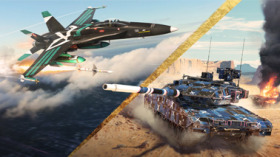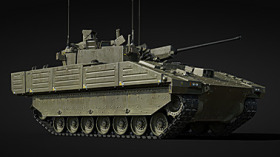
- Для PC
- Для Mac
- Для Linux
- ОС: Windows 10 (64 bit)
- Процессор: Dual-Core 2.2 GHz
- Оперативная память: 4 ГБ
- Видеокарта с поддержкой DirectX версии 11: AMD Radeon 77XX / NVIDIA GeForce GTX 660. Минимальное поддерживаемое разрешение – 720p.
- Сеть: Широкополосное подключение к Интернету
- Место на жестком диске: 22.1 Гб
- ОС: Windows 10/11 (64bit)
- Процессор: Intel Core i5 или Ryzen 5 3600 и выше
- Оперативная память: 16 ГБ
- Видеокарта с поддержкой DirectX 11 и выше: Nvidia GeForce 1060 и выше, Radeon RX 570 и выше
- Сеть: Широкополосное подключение к Интернету
- Место на жестком диске: 62.2 Гб
- Операционная система: Mac OS Big Sur 11.0
- Процессор: Core i5, минимум 2.2GHz (Intel Xeon не поддерживается)
- Оперативная память: 6 Гб
- Видеокарта: Intel Iris Pro 5200 (Mac) или аналогичная видеокарта AMD/Nvidia для Mac (минимальное поддерживаемое разрешение – 720p) с поддержкой Metal
- Место на жестком диске: 22.1 Гб
- Операционная система: Mac OS Big Sur 11.0
- Процессор: Intel Core i7 (Intel Xeon не поддерживается)
- Оперативная память: 8 Гб
- Видеокарта: Radeon Vega II и выше с поддержкой Metal
- Место на жестком диске: 62.2 Гб
- Операционная система: Современные дистрибутивы Linux 64bit
- Процессор: Dual-Core 2.4 ГГц
- Оперативная память: 4 Гб
- Видеокарта: NVIDIA GeForce 660 со свежими проприетарными драйверами (не старее 6 месяцев) / соответствующая серия AMD Radeon со свежими проприетарными драйверами (не старее 6 месяцев, минимальное поддерживаемое разрешение - 720p) с поддержкой Vulkan
- Место на жестком диске: 22.1 Гб
- Операционная система: Ubuntu 20.04 64bit
- Процессор: Intel Core i7
- Оперативная память: 16 Гб
- Видеокарта: NVIDIA GeForce 1060 со свежими проприетарными драйверами (не старее 6 месяцев) / Radeon RX 570 со свежими проприетарными драйверами (не старее 6 месяцев) с поддержкой Vulkan
- Место на жестком диске: 62.2 Гб
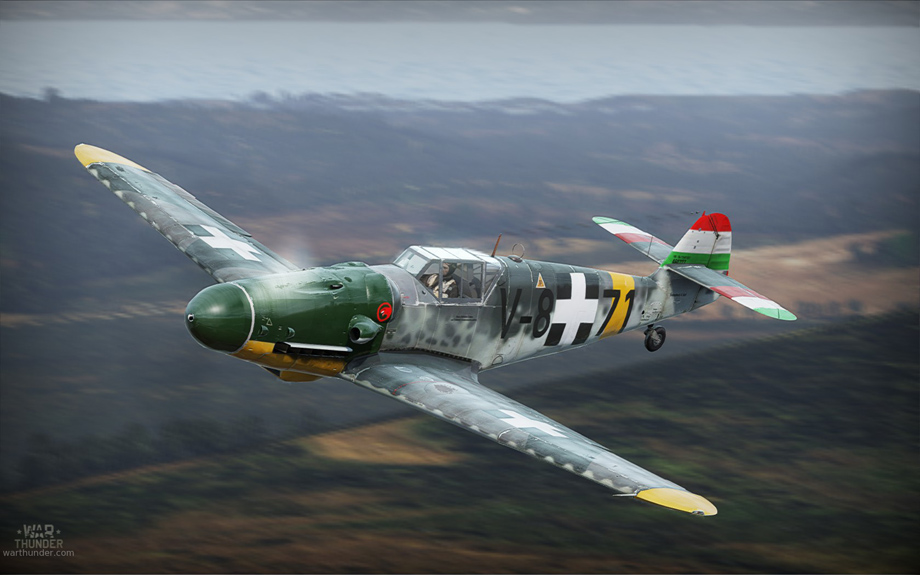
Bf 109 G-6 in Hungarian camouflage, skin by Beppe_HUN | download here
György Debrődy was born in the village of Lajoskomárom in Fejér County, near the centre of Hungary, on January 1st 1921. As a youth, Debrődy was not only keenly interested in aviation but also a committed member of the Scouts. The two played a prominent role in his formative years and it came as little surprise to friends and family when Debrődy joined the Hungarian Air Force after finishing high school in 1939.
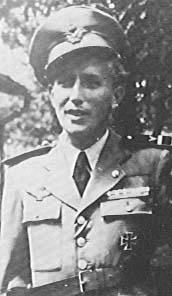 |
Debrődy was trained at the Hungarian Military Flying Academy at Kassa (Košice in modern day Slovakia) and qualified as a fighter pilot in June 1942. The newly commissioned 2nd Lieutenant Debrődy was initially posted to the 5/2 Fighter Squadron of the 5/I Fighter Wing, stationed on the Eastern Front. Debrődy’s war began with his squadron being involved in direct support of ground forces. Equipped with the Bf109 F-4, Debrődy and his comrades did not have the ideal aircraft for the ground attack role but nonetheless were actively employed. It was not until the summer of 1943 when Debrődy encountered his first enemy aircraft; in July 1943 he shot down an La-5 during the opening rounds of the Battle of Kursk. Shortly after the battle, the group began to receive their first few newer Bf109G models.
For Debrődy, an Il-2 fell to his guns two days later, shortly after which he was hit AA fire and made a forced landing near Varvasovka. On August 3rd Debrődy and his wingman attacked a large formation of Soviet aircraft; Debrődy‘s first pass was ineffective but after repositioning and attacking a flight of four Il-2s, he was able to shoot one down. By early August Debrődy had claimed six kills to establish himself as one of the Hungarian Air Force’s rising stars.
On September 25th, whilst locked in combat with the forces of the Red Army Air Force, Debrődy’s Bf109G was shot down by a Yak-9. Too low to take to his parachute and therefore electing to stay with his crippled aircraft, Debrődy successfully carried out a forced landing near a Soviet AA gun battery some ten miles behind enemy lines. Quickly sprinting away to avoid detection, Debrődy lay low overnight before swimming the breadth of the River Dniepr the next day to reach German forces before being returned to his unit. By the end of 1943, a Yak-9 and two Il-2s had brought Debrődy’s tally to nine confirmed kills. Another Il-2 on New Year’s Day 1944 brought his total into double figures.
In late January, Debrődy ‘s squadron was involved in air support for ground forces locked in conflict against the Red Army during the Battle of the Korsun–Cherkasy Pocket. The month saw Debrődy fly 28 sorties and engage enemy aircraft on 11 occasions, during which he shot down 6 aircraft to take his tally to 15. He, too, was again forced down during January.
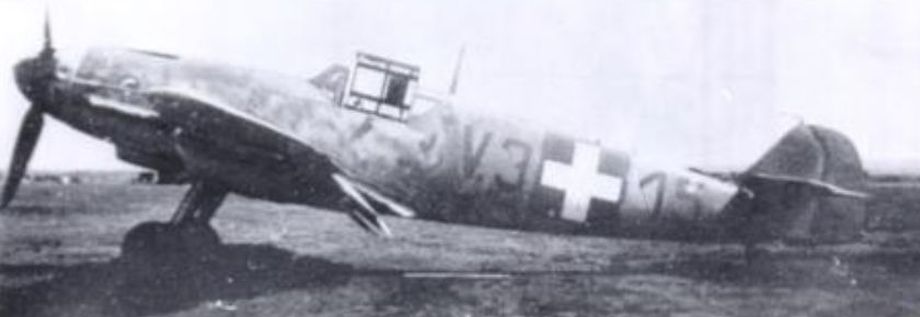 |
|
This 5/2 FS Bf 109G-2/R6 is seen soon after recieving its hungarian codes and crosses |
On February 1st, whilst engaged in combat against the Soviet 5th Guards Fighter Aviation Regiment, Debrődy’s Bf109 was attacked and severely damaged by an La-5. After his engine failed, Debrődy again realized he was too low to jump and so skillfully glided the wounded fighter down to carry out his fourth forced landing, and second behind enemy lines. However, fellow squadron member and 18 victory ace Miklós Kenyeres not only managed to shoot down Debrődy’s attacker; he also landed in 15 cms of snow next to the downed Bf109 to recover his comrade. Under rifle and mortar fire from Soviet forces with bullets slamming through his fuselage, Kenyeres took to the skies with Debrődy crammed into the cockpit with him, after jettisoning the canopy and both pilots leaving their parachutes and flying jackets to make enough room. Debrődy was understandably mortified when, only two days later, Kenyeres was shot down by Soviet AA fire and took to his parachute over an area of dense forest – Debrődy circled the area for as long as he could in an attempt to protect his friend as there was nowhere to land but, regrettably, was eventually forced to turn away with low fuel and leave his friend behind.
The focus of Debrődy’s war changed significantly when, in April 1944, the US 15th Air Force began bombing Hungary from bases in Italy. Similar attacks were also carried out by the British RAF. In response, many of the Hungarian Air Forces’ very best pilots were recalled to form part of the defense against further attacks. Debrődy’s new unit, the 101/3, was now based at Veszprém in the northwest of Hungary and was equipped with the Bf109G.
Debrődy’s first encounter with American aircraft occurred on June 14th 1944 when his Group fought against the 94th Squadron of the US 14th Fighter Group. The Hungarian pilots shot down five P-38 Lightnings in exchange for the loss of two Bf109s; Debrődy himself shot down one US fighter. He repeated the feat only two days later before shooting down a P-51 near Pilisvörösvár on July 2nd. The 101st Home Air Defence Fighter Wing continued to fight against the US 15th Air Force throughout July, during which Debrődy shot down a B-17G and a B-24. On one occasion his Bf109 was hit by an American fighter and his oxygen tank exploded, peppering Debrődy with shrapnel and once again leaving him to carry out a forced landing, this time with only one wheel down.
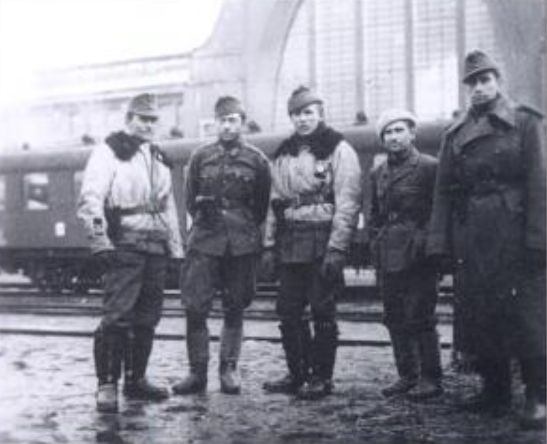 |
|
Lt György Debrődy (centre) poses with unnamed Hungarian pilots outside Kharkov railway station |
On November 1st, with 23 confirmed kills and now one of Hungary’s leading aces, Debrődy was promoted to 1st Lieutenant. Now fighting against the US strategic bombing offensive and the advancing Soviet Army, Debrődy’s CO was killed on November 4th and Debrődy was given command. He shot down a B-24 the next day.
On November 16th 1944, Debrődy took to the skies for his 203rd and final combat mission. Leading his squadron, the Hungarian Bf109s encountered a formation of La-5s southeast of Jászberény; Debrődy shot down one of the Soviet fighters. The last attack of Debrődy’s combat career saw him driving his fighter headlong towards a Soviet Yak-9, both pilots’ guns blazing. Debrődy’s aim found his mark and the Yak exploded in mid air; however, the Soviet pilot’s gunnery was just as accurate. Bullets smashed through the cockpit of Debrődy’s Messerschmitt and struck him in the torso. Severely wounded, it was the ultimate testament to the young Hungarian pilot’s tenacity and fortitude that he was able to fly to an airfield near Hatvan and carry out an emergency landing.
By a miracle, Debrődy survived. After recovering, he was awarded his nation’s highest decorations for valour: the Hungarian Order of Merit, Officer’s Cross on War Ribbon with Swords, the Hungarian Order of Merit, Knight’s Cross on War Ribbon with Swords, and the Hungarian Gold Medal of Valour for Officers amongst others. Whilst recovering, he was promoted to Captain in January 1945. By April 1945, Hungary’s effective participation in the Second World War had come to an end and Debrődy ended the war in a POW camp in Austria.
György Debrődy had survived nearly four years of war but was still recovering from his wounds when hostilities ended. After the war, Debrődy moved to Italy and worked as a loader, travel agent and movie extra before once again meeting up with Miklós Kenyeres. The two emigrated to Spain and worked in a factory in Barcelona and Debrődy was married in 1952. Later, Debrődy moved to Canada where his wife gave birth to a daughter. In 1967 he was operated on again and doctors removed fragments of a Soviet 12.7mm bullet from near his spine, where they had remained lodged since his last encounter with a Yak-9 over twenty years before. He finally settled in the United States in 1968 and found work with Pan-Am.
One of the greatest Hungarian heroes of the Second World War, György Debrődy passed away in Cortland, New York in 1984, having succumbed to lung cancer.
We present the 101st Home Air Defence Fighter Wing emblem, which will be added to War Thunder with an upcoming update:
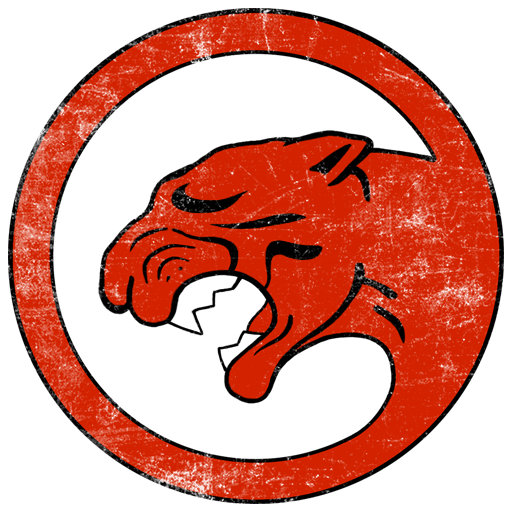 By Jej 'Charlie Foxtrot' Ortiz
By Jej 'Charlie Foxtrot' Ortiz
About The Author
 |
Mark Barber, War Thunder Historical Consultant Mark Barber is a pilot in the British Royal Navy's Fleet Air Arm. His first book was published by Osprey Publishing in 2008; subsequently, he has written several more titles for Osprey and has also published articles for several magazines, including the UK's top selling aviation magazine 'FlyPast'. His main areas of interest are British Naval Aviation in the First and Second World Wars and RAF Fighter Command in the Second World War. He currently works with Gaijin Entertainment as a Historical Consultant, helping to run the Historical Section of the War Thunder forums and heading up the Ace of the Month series. |


